Fat Transfer in Cancun
Search and Compare the Best Clinics and Doctors at the Lowest Prices for Fat Transfer in Cancun
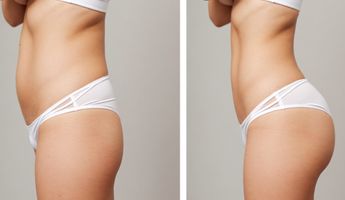
Find the best clinics for Fat Transfer in Cancun
With Medijump you can browse 4 facilities offering Fat Transfer procedures in Cancun. The cheapest price available is $439 in Mexicali
Fat Transfer in Mexico
Price: $ 439
Fat Transfer in Mexicali
Price: $ 439
Fat Transfer in Cancun
Price: $ 1,314
Thailand offers the best prices Worldwide
Price: $ 167
From 12 verified reviews
cynthia garen, 10 February 2020
Dr. Torres is the best! I live in St. Louis, and was lucky enough to meet a woman who got quite a bit of work done by him. I had issues with a breast augmentation done by a different doctor 7 years prior, which left me very self conscious about my body. I was also curious about liposuction and Brazilian butt lift, so I did a with him via email and what’s app, and decided to take a leap of faith and go to Cancun! I could not have been any happier with the whole experience. His assistant Robyn makes you feel so welcome and comfortable, every step of the way. Of course I was still a little skeptical about it all until I met with Dr. Torres for the physical consultation. I left his office with zero doubts about his ability, his vision, and his ethics. I am so grateful to have found him and will go back to him for any future work I will get done. Thank you Dr. Torres for all that you have done for me.
From 8 verified reviews
Henry Beltran, 25 January 2020
Extremely clean, quiet and very spacious rooms, excellent service
Perfection Makeover and Laser Center, can be found in Blvd Kukulcan, Cancun, Mexico and offers its patients Fat Transfer procedures as well as 32 other procedures, across 1 different procedure categories. The price of a Fat Transfer procedure starts from just ฿47,300, and the average price is around ฿74,824. A small team of medical professionals undertake all procedures at the Clinic, with 3 in total, and Perfection Makeover and Laser Center has several accreditations, including: ISAPS (International Society of Aesthetic Plastic Surgery)IPRAS (International Confederation for Plastic Reconstructive & Aesthetic Surgery)The American Society for Aesthetic Plastic Surgery
Dr. Jorge Uribe Kalafatic, can be found in Blvd Kukulcan, Cancun, Mexico and offers its patients Fat Transfer procedures as well as 43 other procedures, across 6 different procedure categories. At present, there is no pricing information for Fat Transfer procedures at Dr. Jorge Uribe Kalafatic. The pricing information is quite specialised, so it's only available on request, and the average price is around $2,079. The lead specialist at the Hospital will be carrying out all the treatments, and Dr. Jorge Uribe Kalafatic is accredited by just one known accreditations institute, AMCPER - Asociación Mexicana de Cirugía Plástica, Estética y Reconstructiva
Compare Before & After Photos of _procedure_photos.phpFat Transfer

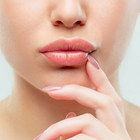
Front view
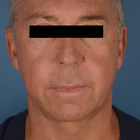
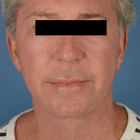
Front view
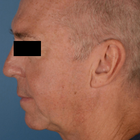
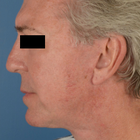
Full-side view
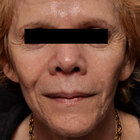
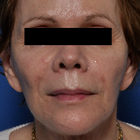
Front view
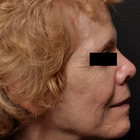
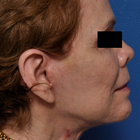
Full-side view
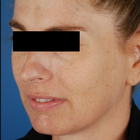
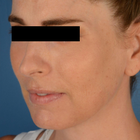
Half-side view
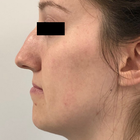
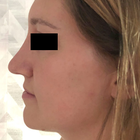
Full-side view
WHY US?
At Medijump, we're making medical easy. You can search, compare, discuss, and book your medical all in one place. We open the door to the best medical providers worldwide, saving you time and energy along the way, and it's all for FREE, no hidden fees, and no price markups guaranteed. So what are you waiting for?

Free

Best Price

Widest Selection

Risk-Free
What you need to know about Fat Transfer in Cancun

Also known as Fat Harvesting, Fat Grafting, Fat Injections, Lipofilling, Fat Transfer is a cosmetic surgery involving the movement of fat from one part of the body to another. During this procedure, your own fat will be used to fill in irregularities and grooves, primarily in the face, around the temples, eyes, chin, and lips. It can also be used to enhance the appearance of the breast, feet, hips, buttocks, and hands. The procedure is now a well-established technique that was perfected in the early nineties.
Some of the most common aesthetic indications for undergoing fat transfer / lipofilling include sunken cheeks, the disappearance of fat from the cheekbones, deep grooves running from the nose to the corners of the mouth, and in some instances of lines between the lower eyelids and the cheek. It is also one of the most common methods used for lip enhancement. In addition, lipofilling can be used to smooth out all types of irregularities such as those resulting from poorly performed liposuction or injuries.
The necessary fat is obtained by a limited liposculpture through one or several 3 to 5 mm incisions. It is normally taken from the abdomen or inner thigh. The aspirated fat is processed by centrifuging, filtering or rinsing. Pure liquid fatty tissue ready for injection is the result. The fat is then injected where needed. The fat is evenly distributed into the area by injecting minute amounts in the tissues so that the injected fat is well surrounded by healthy tissue. This ensures that the transplanted fat remains in contact with the surrounding tissues that must supply it with oxygen and nutrients.
What is the cost of Fat Transfer in Cancun?
Being aware of the costs linked to the Fat Transfer pricing in Cancun is vital for efficient budgeting and organizing. Pricing can differ greatly conditional to numerous things, such as the intricacies of the operation, the quantity of fat transferred, the surgeon's skill level, and the clinic's place. Conducting meticulous research and obtaining diverse quotations from multiple providers before settling is advisable.
Bear in mind, the Fat Transfer is generally deemed a vanity procedure, thus, it is not typically insured by health insurance providers. Exceptions may exist if the operation holds a medical necessity, like reconstruction operations post-mastectomy or injury. It's always advantageous to liaise with your insurance provider to grasp the specific details of your coverage and to ascertain the possible out-of-pocket expenses you could face.
What does a Fat Transfer Procedure Involve?
Consisting of two completely different procedures, extraction of fat called liposuction and transfer of fat through injections. Both the donor and recipient sites are sedated by giving local anesthesia. After this, fat is harvested through injections from the sites where adipocytes are tightly packed, such as the buttocks or abdomen. However, the fat present in lateral sides of the thighs and lower abdomen is also good fat as it contains a larger concentration of adipose-derived stem cells. These stem cells promote angiogenesis and adipogenesis at the recipient site - multiple injections are used to do this.
The material extracted is centrifuged, sedimented and filtered for excessive liquid and pure fat cells are injected just below the skin. This is the most difficult step of fat transfer to inject fat evenly in different layers of recipient tissue. Cannulas and syringes of different sizes are used to do this. In the case of breast augmentation, multiple fat injections are applied to the breasts. It is ensured that these fat cells are injected near a blood vessel so the cells don't die due to a lack of nutrition. Proper nutrition is needed for the cells to survive and grow.
What are the types of Fat Transfer?
Facial fat transfer: If you have facial creases, such as laugh lines, smile lines, and crow’s-feet, fat can be removed from your abdomen, thighs, or other areas and be injected into your face. Acne scars and sunken areas of the face, lips, and cheeks can also be filled in. Your plastic surgeon can even use grafted fat to minimize lines between your nose and mouth, correct skin depressions or indentations and minimize forehead wrinkles. (Facelift, Lip Augmentation)
Breast augmentation: Fat transfer breast augmentation essentially uses liposuction to take fat from other parts of your body and inject it into your breasts. This is a breast augmentation option for women who are looking for a relatively small increase in breast size and would prefer natural results.
Breast implants plus fat grafting: If your breast shape needs optimizing during a breast implant procedure, fat grafting can be useful. If you have residual breast irregularities after undergoing breast augmentation with implants, the irregularities can be filled in with fat to produce a smooth contour and an optimal shape.
Breast reconstruction with fat grafting: If you have breast defects following lumpectomy for breast cancer, fat grafting is an effective method for filling in these defects. Fat grafting is also an option for total breast reconstruction following mastectomy; however, to achieve sufficient breast volume, this is usually a multistage process that requires at least two to four sequential fat grafting procedures.
Buttock augmentation with fat grafting: Many people who desire a fuller, more rounded buttock will opt for a “Brazilian butt lift” which uses fat transfer to provide a more curvaceous buttock without the use of an implant. Liposuction is commonly used to both sculpt the surrounding area and collect the autologous fat to be injected.
Hand rejuvenation with fat grafting: Fat grafting into your hands is effective for adding volume, “plumping up” wrinkled areas, covering underlying vessels and tendons and improving the quality of your skin over time.
How Long Should I Stay in Cancun for a Fat Transfer Procedure?
As an outpatient procedure, just a couple of hours are needed depending upon the amount of fat that is to be removed and transferred. You can leave the hospital on the same day or sometimes an overnight stay is advised, and in some cases, more than one session is needed. You should stay in Cancun for at least 10-14 days after being discharged for regular check-ups. During this period, your health and results of the procedure are monitored by your surgeon.
The precise duration of your visit will primarily hinge on your personal situation, including the scope of your surgery, your total health condition, and your body's healing capability. It is always wise to engage in open dialogue with your surgeon about the anticipated period of your stay.
What's the Recovery Time for Fat Transfer Procedures in Cancun?
The recovery period is different for different areas of your body. After a buttock augmentation, you have to sleep on your stomach or keep standing for at least 4 weeks. Because sitting can dissipate the fat. The shape of the augmented area might appear irregular initially, it will get a proper contour after some time. There will be moderate swelling and bruising at both the donor and the recipient sites for 2 weeks. Your face might appear fat and plump after fat grafting but it will settle down before long. You might suffer from moderate pain for a few days. Pain killers are given to deal with this. Almost 6 months are required for the results to fully show.
What sort of Aftercare is Required for Fat Transfer Procedures in Cancun?
Things to consider:
- Regular checkups after being discharged.
- Take your medicines regularly, as and when prescribed by the doctor. Avoid self-medication.
- Follow a healthy diet plan for a better recovery.
- Ensure the presence of a friend or family member with you in the early few days to help you with house chores.
- Avoid excessive movement during the early few weeks and do not sit on your butts in case of butt fat transfer because it can dissipate the fat rendering it ineffective.
- Look for the signs of blood clot formation, excessive bruising, etc. Visit your doctor immediately if you find any abnormal thing.
What's the Success Rate of Fat Transfer Procedures in Cancun?
When exploring any health-related process, the success ratio becomes a key element to consider. The efficiency of the Fat Transfer in Cancun hinges upon various aspects such as proficiency and expertise of the surgeon, the health condition of the individual, and compliance to the guidelines of care after the operation. Fat transfer has been gaining fame due to its dual advantage of eliminating unnecessary fat from the body and accentuating preferred areas.
The outcomes of Fat Transfer show promising persistency. Many people have enjoyed pleasing results that lasted for a long span of time. Fat transfer for breast augmentation has increased by 76% in 2016 while for butt augmentation, a 26% increase has been witnessed. This approach also enjoys a commendable success ratio when it comes to patient satisfaction, with some researches revealing satisfaction percentages reaching up to 85%. It's however crucial to hold realistic anticipations, since factors like age, weight changes, and general health can sway the results. Regular consultations with your health provider are crucial for monitoring improvements and promptly dealing with any arising issues.
Are there Alternatives to Fat Transfer Procedures in Cancun?
Fat grafting is an expensive technique as it consists of 2 different procedures. Following are some alternatives to it:
- Dermal fillers: these are given through injections to make your skin look plump. Sunken cheeks can be effectively corrected through this technique.
- Breast implants: for small breasts, implants are an alternative to fat grafting. A silicone implant is inserted into your breasts to increase their size.
- Breast reconstruction: cancer patients, who went through mastectomy can get their bust back by reconstructive surgery.
- Tummy tuck: This procedure tightens your abdominal muscles giving them a tighter and flattened appearance.
- Liposuction: excessive fat is removed from different parts of your body through liposuction. Your tummy looks flatter and you look smarter after this procedure.
- Cheek augmentation: in this technique, silicone implants are inserted into your cheeks to make them look bigger and plump.
All of the techniques mentioned above involve only one procedure.
What Should You Expect Before and After the Procedure
Understanding the process before and after undergoing the Fat Transfer is crucial to easing worries and ensuring a successful outcome. Before the process, your doctor will provide in-depth guidance on the requisite preparations. This might involve abstaining from certain drugs or supplements that may increase bleeding, and possibly, fasting if general anesthesia is planned. Thorough medical check-up and health evaluation will be performed to lower any prospective risks. In particular instances, your doctor may advocate lifestyle alterations such as quitting smoking because it can hinder the recovery process.
Following the Fat Transfer, patients might have minor swelling and bruising, but these usually recede in a few weeks. Aches and discomfort can be effectively controlled with prescribed medicine. Though recovery time varies among individuals, most return to work and resume everyday activities within one to two weeks. Your doctor will provide detailed instructions for a post-procedure care routine, possibly involving wearing pressure garments and regular review meetings to track healing and progress.
What are Potential Risks of Fat Transfer?
Possible complications can include:
- Blood clot formation, infections, and ulmonary embolism leading to the failure of fat grafting
- Absorption of the transferred fat by the body leading to asymmetry or irregularities in the treated area
- The formation of oil cysts or calcification which can interfere with radiological imaging
Whilst the information presented here has been accurately sourced and verified by a medical professional for its accuracy, it is still advised to consult with your doctor before pursuing a medical treatment at one of the listed medical providers
No Time?
Tell us what you're looking for and we'll reachout to the top clinics all at once
Enquire Now

Popular Procedures in Cancun
Prices Start From $26

Prices Start From $113

Prices Start From $208

Prices Start From $275

Prices Start From $758

Prices Start From $5

Recommended Medical Centers in Cancun for Fat Transfer

- Interpreter services
- Translation service
- Religious facilities
- Medical records transfer
- Medical travel insurance
- Health insurance coordination
- TV in the room
- Safe in the room
- Phone in the room
- Private rooms for patients available

- Interpreter services
- Translation service
- Religious facilities
- Medical records transfer
- Medical travel insurance
- Health insurance coordination
- TV in the room
- Safe in the room
- Phone in the room
- Private rooms for patients available

- Interpreter services
- Translation service
- Religious facilities
- Medical records transfer
- Medical travel insurance
- Health insurance coordination
- TV in the room
- Safe in the room
- Phone in the room
- Private rooms for patients available

- Interpreter services
- Translation service
- Religious facilities
- Medical records transfer
- Medical travel insurance
- Health insurance coordination
- TV in the room
- Safe in the room
- Phone in the room
- Private rooms for patients available

- Interpreter services
- Translation service
- Religious facilities
- Medical records transfer
- Medical travel insurance
- Health insurance coordination
- TV in the room
- Safe in the room
- Phone in the room
- Private rooms for patients available

- Interpreter services
- Translation service
- Religious facilities
- Medical records transfer
- Medical travel insurance
- Health insurance coordination
- TV in the room
- Safe in the room
- Phone in the room
- Private rooms for patients available

- Interpreter services
- Translation service
- Religious facilities
- Medical records transfer
- Medical travel insurance
- Health insurance coordination
- TV in the room
- Safe in the room
- Phone in the room
- Private rooms for patients available

- Interpreter services
- Translation service
- Religious facilities
- Medical records transfer
- Medical travel insurance
- Health insurance coordination
- TV in the room
- Safe in the room
- Phone in the room
- Private rooms for patients available

- Interpreter services
- Translation service
- Religious facilities
- Medical records transfer
- Medical travel insurance
- Health insurance coordination
- TV in the room
- Safe in the room
- Phone in the room
- Private rooms for patients available

- Interpreter services
- Translation service
- Religious facilities
- Medical records transfer
- Medical travel insurance
- Health insurance coordination
- TV in the room
- Safe in the room
- Phone in the room
- Private rooms for patients available
Fat Transfer in and around Cancun
About Cancun
Occupying a coveted location on Mexico's Yucatan peninsula and bordered by the Caribbean Sea, Cancun stands as the country's top-tier coastal attraction. This city, best recognized for its sprawling 21 km stretch of pristine white sandy beaches, also presents exhilarating water-based recreational activities and a lively nocturnal scene.
Cancun is emerging as one of the most desirable destinations for medical tourism. It has world-class healthcare facilities and internationally accredited hospitals. The city hosts two of the five JCI accredited hospitals in Mexico. Furthermore, Multi-million dollar ‘Health City' project is underway and the aim of the project is to establish the largest medical complex of its kind in the country.
Annually, Cancun welcomes thousands of individuals from various global corners seeking to undergo an array of medical procedures. Affordability remains a key attraction, with patients managing to save approximately 60-80% in total healthcare costs, inclusive of travel and accommodation. As an illustration, a bariatric surgery that could set you back by $25,000 in the US could be feasibly done in Cancun for a mere $600.
The gamut of medical procedures offered in this beach-front city spans across dental treatments, alternative therapies, aesthetic surgery, cardiac surgery, cosmetic surgeries, as well as obstetrics and gynecology. The most sought-after treatments are typically dental and cosmetic surgeries, largely undertaken at acclaimed centers such as Perfection Makeover and Laser Center, Cancun Dental Specialists, and Hospital Galenia.
Popular parts in Cancun
Cancun, a prominent resort city, can be broadly classified into two distinctly different areas: the Zona Hotelera Cancun and Cancun Downtown.
-
Zona Hotelera Cancun
The area encompasses several suburbs. The zone lies on the 15-mile long sandbar just off the mainland. Beachfront luxury resorts, shopping malls, multi-cuisine restaurants, and lovely Caribbean beaches are the highlights of the area. The nightlife is exhilarating with glitzy bars and salsa clubs. You can enjoy the rotating observation deck on the scenic tower Cancun to enjoy the breath-taking view of the ocean and the city.
Tourists can indulge in a number of water sport activities including snorkeling, windsurfing, paragliding, scuba diving, and water skiing. The natural water park Xel-Ha is ideal for snorkeling.
Your trip will be incomplete without a visit to the age-old Mayan Museum. Cancun is the starting point for discovering Maya Riveria, which houses the world's second largest coral reef.
The picturesque island, Isle Mujeres is just a few miles off the coastal line and has pristine beaches. The world-famous underwater Museum, MUSA is an absolute visual treat for the tourists. The museum has over 500 stunning sculptures. You can admire their beauty from inside the glass bottom boats.
-
Cancun downtown
The downtown portion of Cancun is characterized as a bustling hive of lively shops, diverse eateries, and spirited pubs. Tulum Avenue stands out as the primary and most attractive boulevard in the area, boasting an impressive assortment of handicraft shops, theatre venues, departmental stores, and shopping centers.
The city’s expansive open-air market, Mercado 28, enjoys popularity for its vendors specializing in silver jewelry and unique souvenirs. Yaxchilan Avenue, a street forever brimming with animated bars and restaurants, virtually never sleeps.
The residential architecture within Cancun downtown predominantly comprises of apartment complexes and villas.
Weather and Climate in Cancun
Endowed with the quintessential sun-soaked holiday weather, Cancun boasts a tropical savanna climate characterized by two distinct cycles: the dry season and the rainy season. Average temperatures generally oscillate between 23°C and 28°C. Dips below 21°C are fairly rare, just as surges above 34°C.
The optimal time to plan a visit to this city spans from November to April. This timeframe offers moderate temperatures and minimal rainfall, making it an appealing period for a holiday. However, it's noteworthy that accommodation costs tend to hike significantly during these months.
- Wet season: May to October and the city receives 984 mm rainfall during this season. Yet, during the day, you can enjoy plenty of sunshine. Short episodes of thunderstorms are more common and due to the less favorable climatic conditions, the inflow of tourists reduces during this season.
- Dry season: November to April. The temperature is warm and it is the perfect time to swim. Occasional showers are common with a few cool and windy days.
Getting around in Cancun
It is easy to get around and navigate in Cancun, as most of the tourist attractions lie in the Zona Hotelera. Taxis, public buses and other means of transportation are available to cater to the needs of the locals and the tourists.
- Bus: Is the easiest and the cheapest way to get around. The one-way ticket can cost you somewhere between 0.50 cents to $1. The existing bus routes connect Zona Hotelera and Cancun downtown. You can visit all the locations on your bucket list by bus. Regional buses are available to travel from Cancun to other tourist towns.
- Taxis: They are not metered, so it is good to agree on the fare before departing. You can expect to pay $40-$50 if you are taking a taxi from the airport to downtown. Normally, inside the city, you need to pay somewhere between $10 and $25 per journey.
- Ferry: Ferry services are available to travel to nearby islands like the Isle of Mujeres. Ferries run at a frequency of 30 minutes and will cost around $19 for adults and $14 for kids for a return ticket.
- Flight: The second busiest airport of Mexico, Cancun International Airport is a 25-minute drive from the Zona Hotelera. Several domestic flights and International flights heading to the US, UK, and Europe operates from here.
Tourist Visa in Cancun
Visa requirements for Mexico:
Citizens of 67 countries, including Australia, Brazil, Belgium, Canada, the USA, UK, Spain, Japan, and more, are exempt from visas when visiting Mexico for up to 180 days.
Citizens of India, China, and Russia need to apply for a tourist visa in advance before traveling to Mexico. The tourist visa is valid for six months from the date of entry and can be extended for up to six months. The tourist visa fee is around $22 USD.
How to apply for a Mexican tourist visa:
You can apply for a Mexican tourist visa online or at a Mexican embassy or consulate. The online application process is relatively straightforward and takes about 20 minutes to complete. You will need to provide your passport information, travel dates, and contact information. You will also need to upload a digital photo of yourself.
Once you have submitted your application, you will receive an email confirmation. You should then receive your visa within 5 to 10 business days.
Additional Information
- Mexico is ethnically diverse. Spanish is the main language widely spoken here. However, you will notice locals conversing in Mayan with each other. There are 68 indigenous languages in Mexico. Most People in Cancun will speak English.
- The Mexican peso (MXN) is the official currency of Mexico. As of October 11, 2023, 1 USD is equivalent to approximately 19.6 Mexican pesos. The exchange rate fluctuates daily, so it is best to check the latest rate before traveling.
- ATM machines lie inside the premises of the bank. Money exchange booths are there to convert currencies. Traders accept both credit and debit cards.
- Almost 89% of the population in Cancun are Catholics.
- Public holidays in Cancun:
- New Year's Eve - January 1
- Christmas Day – December 25
- Revolution Day – Third Monday in November
- Independence Day – September 16
- Good Friday
- Constitution Day – First Monday of February
Popular Searches
- Plastic Surgery in Thailand
- Dental Implants in Thailand
- Hair Transplant in Thailand
- Breast Augmentation Thailand
- Gastric Sleeve in Thailand
- Gender Reassignment Surgery in Thailand
- Laser Hair Removal in Bangkok
- Botox in Bangkok
- Dermatology in Bangkok
- Breast Augmentation in Bangkok
- Coolsculpting in Bangkok
- Veneers in Turkey
- Hair Transplant in Turkey
- Rhinoplasty in Turkey
- Stem Cell Therapy in Mexico
- Rhinoplasty in Mexico
- Liposuction in Mexico
- Coolsculpting in Tijuana
- Rhinoplasty in Korea
- Scar Removal in Korea
- Gastric Sleeve in Turkey
- Bone Marrow Transplant in India
- Invisalign in Malaysia
- Plastic Surgery in the Dominican Republic
- Tummy Tuck in the Dominican Republic
- Plastic and Cosmetic Surgery in Poland
- Rhinoplasty in Poland
- Hair Implant in Poland
- Dental Implants in Poland
- IVF in Turkey



